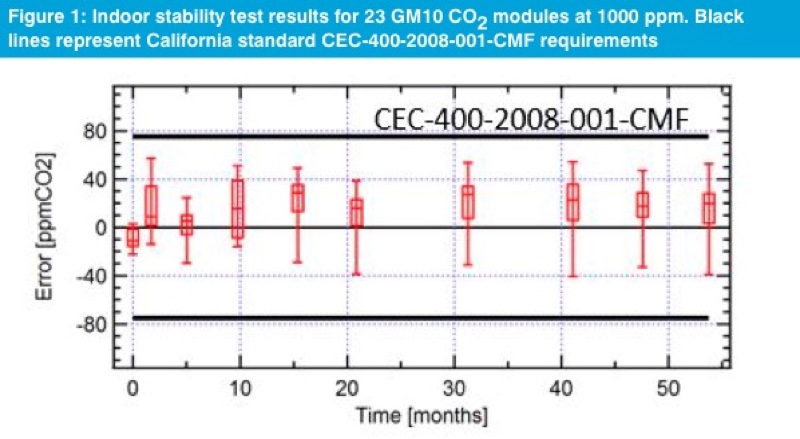Demand controlled ventilation (DCV) and free cooling are advanced control regimes becoming popular among companies in a move to reduce energy consumption in HVAC. However, no amount of intelligence in the building automation system will help achieve this if the sensor measuring the actual conditions has drifted.
It is also not enough that accuracy requirements are met out of the box; the requirements should be maintained during the lifetime of the building. Figure 1 demonstrates the test results for 23 GM10 CO2 modules at 1000 ppm. Even with these notable results, we still recommend periodic checking against a reliable handheld instrument at least every second year.

Indoor air conditions are considered benign for sensors. On the other hand, sensors used in building automation are rarely calibrated or serviced once the system has been commissioned.
Incorrectly wired or faulty sensors are common, so at least one comparison measurement should be done during the system commissioning.
It is advisable to check the installed sensors after a couple of years against a reliable handheld instrument.
Enthalpy control
Economisers can save energy in some climates by using free cooling from outdoor air. In humid climates, however, the most important factor is the amount of humidity in the outdoor air, not the temperature.
At 30°C the enthalpy changes from 30 kJ/kg to 96 kJ/kg when the relative humidity changes from dry to 95%RH. According to ASHRAE standard 90.1, differential enthalpy control or fixed enthalpy control is recommended in economisers for hot and humid climates.
The RH accuracy for control sensors should be <±5%RH. While most sensors are specified to ±5%RH or better, this specification is out of the box. The ±5%RH should be maintained over the lifetime of the system.

